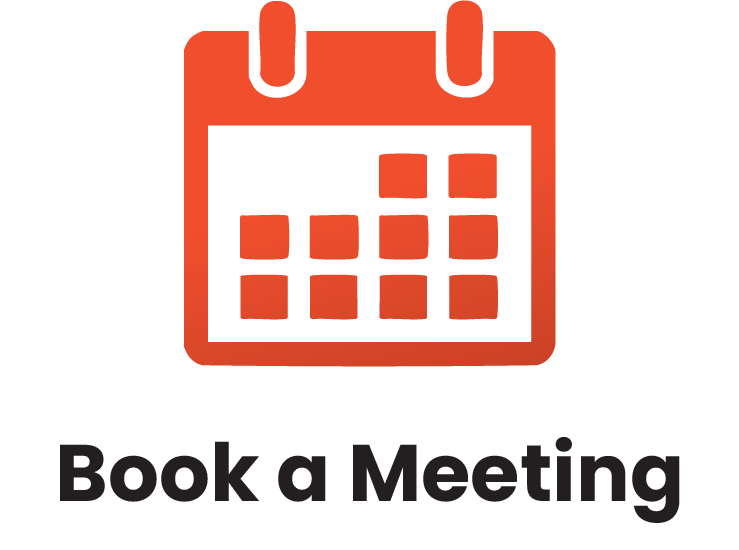Interactive training sessions led by experienced facilitators.
What is In-Person, Instructor-Led Training?
Our in-person training is delivered by a live facilitator who works directly with your team at your location. It’s our most popular format because it allows for real-time interaction, hands-on learning, and direct support.
Every session is tailored to your team’s specific goals, industry, and challenges—no generic, one-size-fits-all programs. Whether it’s a single session or a full training series, we design the experience to be relevant, practical, and fully aligned with your needs.
What is Live Webinar Training?
Live webinars are facilitator-led training sessions delivered online in real time. They’re ideal for teams working in different locations or with busy schedules.
This format offers shorter, more frequent sessions that are easy to coordinate—making it a convenient option for organizations with remote or distributed teams.
What is Virtual Classroom Training?
Virtual Classroom training is live, instructor-led training delivered online. It offers the same interactive experience as in-person sessions, with real-time discussions, group activities, and instructor feedback.
It’s a flexible option for organizations that want to reduce travel, save costs, or better fit training into busy schedules.
What is a Lunch & Learn Session?
Lunch & Learn sessions are short, facilitator-led training sessions delivered in person or online—typically during the lunch hour. They focus on specific topics or skills and offer a quick, engaging way to learn without a full-day commitment.
These sessions can be offered as one-time events or as part of a series, making them a great option for ongoing, bite-sized learning.
Online Learning
Enjoy our self-paced option and learn from anywhere!
$425.00 USD
Workplace Violence: How to Manage Anger and Violence in the Workplace
Violence of any sort has many roots. Sometimes there are warning signs of workplace violence, but this is not always the case. It is up to us to learn whatever we can to prevent, identify, and mitigate any threats, and this comprehensive workshop includes everything a workplace leader needs to get started.
What Will Be Covered
LEARNING OBJECTIVES
Learning Objectives
This three-day course will teach participants how to:
- Describe what workplace violence is
- Identify some warning signs of violence
- Apply the cycle of anger
- Understand Albert Bandura’s behavior wheel and how it applies to anger
- Develop a seven-step process for managing your anger and others’ anger
- Apply better communication and problem solving skills, which will reduce frustration and anger
- Develop some other ways of managing anger, including coping thoughts andrelaxation techniques
- Use the nine components of an organizational approach to managing anger, including risk assessment processes
- Respond if a violent incident occurs in the workplace, on both an individual and organizational level


A Deeper Look
COURSE OUTLINE
A breakdown of each session included in this course.
What is Workplace Violence?
To start the workshop, we will examine what workplace violence is, the cycle of violence, and some warning signs.
Understanding the Behavior Wheel
During this session, we will look at Albert Bandura’s behavior wheel. We will also explore how it applies to violence and anger.
The Anger Management Process
Dr. Lynn McClure, an anger management specialist, has identified a seven-step process to manage anger (yours or someone else’s). We will examine this process in detail through a lecture and through role play presentations.
Communicating Better
Communicating effectively can often help prevent people from getting angry. We will explore some key communication skills, including a four-step assertive message, listening skills, questioning skills, and three keys to unlock the best in people.
Basic Problem Solving Tools
Being an effective problem solver is another way a person can help prevent anger. We will spend most of the afternoon of Day One looking at a three-phase problem solving model and a problem solving toolkit. Participants will then apply these skills to a case study and to a personal problem.
Other Ways of Managing Anger
During this session, participants will discover some ways to manage their own anger, including coping thoughts, strategies to unwind, and relaxation techniques.
A Systems Approach
The second day of the workshop will focus on how an organization can plan to prevent workplace violence, using Norman Keith’s nine stage plan as a framework.
Developing a Policy and Program
A properly implemented violence policy and program is crucial to preventing workplace violence. We will look at both the policy and the program in detail.
Risk Assessment
A risk assessment will help the organization identify possible security and safety concerns. We will look at a five-step plan that any organization can use to assess these risks. Participants will apply this plan to a case study.
Hiring Practices
During this session, we will discuss some things that you can do at the hiring stage to help prevent workplace violence.
Workplace Design
The physical environment of the workplace can contribute to, or help prevent, workplace violence. We will explore some of these considerations through a case study.
Workplace Practices and Procedures
We will look at how training, Human Resources policies, staff management, and security measures can help make your workplace a safer place. Participants will then complete a case study to apply these ideas.
Security Systems and Personnel
During this session, we will look at some things that a security system can be made up of, including security staff, access restrictions, surveillance cameras, and intercoms. Then, participants will design a security plan for the Acme Widgets Company.
Training Programs
Training staff in some of the skills that we have learned, such as problem solving or communication, can also help prevent violence. We will learn about an eight-step plan that can help participants identify, plan, and implement training programs.
Developing Emergency Response Plans
It is crucial that employees know what to do in case of an incident. We will discuss some incidents to be prepared for and we will discuss what an ERP should cover.
Program Review
Constant review and re-evaluation are necessary to ensure your violence prevention program works. We will look at some components of this review and when it should be performed.
Developing a Threat Response Process
For the third day of the workshop, we will work on developing a plan to respond to a violent threat or incident. We will use a 14-stage plan developed by Drs. James Turner, Michael Gelles, and Chris Hatcher, as our framework. Participants will take on the role of the threat assessment team and will work on a single case study throughout the day.
The Immediate Response
To begin the day, we will look at what to do when you are part of a violent incident.
Consulting with the Experts
Depending on the situation, you may find that you need outside help. This session will discuss who should be brought in, when they should be contacted, and how they should be contacted.
Gathering Additional Information
Once the basic facts have been gathered and outside experts have been consulted, the threat assessment team should determine what other information is necessary. This session will provide some things that should be considered.
Re-Evaluating Information
During this session, we will look at two key processes that will help the threat assessment team determine their next steps.
Communicating Incidents and Threats
The next step in the threat response process is to establish a communication plan. We will give participants a template and some tips on communicating effectively.
Interviewing Employees
Stages seven and eight in the threat response process involve talking to the violent person. We will look at how to plan and interview the person, and then participants will have a chance to role play an interview.
Risk Level Analysis
At this stage, the threat assessment team will have gathered enough information to determine the severity of the threat or incident. We will look at a five-stage continuum that can help the team decide how to respond to the threat based on the severity level.
Reviewing the Options
Once the team has identified the severity level, a long term plan can be put into place. During this session, we will look at some options that can be used.
Analyzing the Impact
Now that the threat has been dealt with, it is time to debrief the affected people. We will look at some people that will likely need follow-up and forms that follow-up can take.
Incident Response Checklist
During this session, we will look at a checklist developed by Dr. Robert Turner that the threat assessment team can use throughout the threat response process.
Process Application
To wrap up the day, we will review the case study presented at the beginning of the day and how it moved through the various steps of the threat response process.













